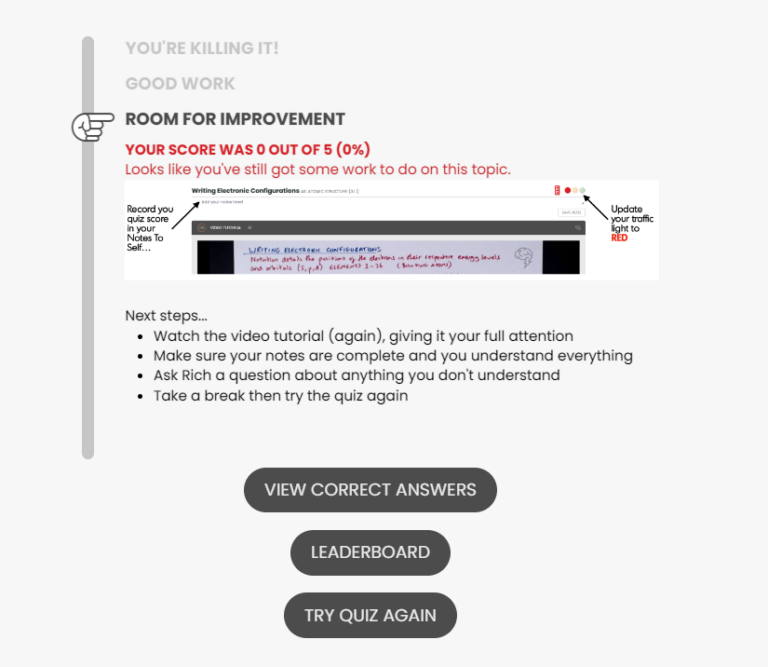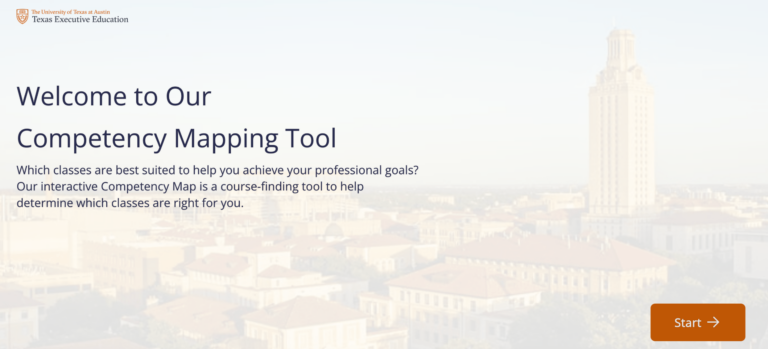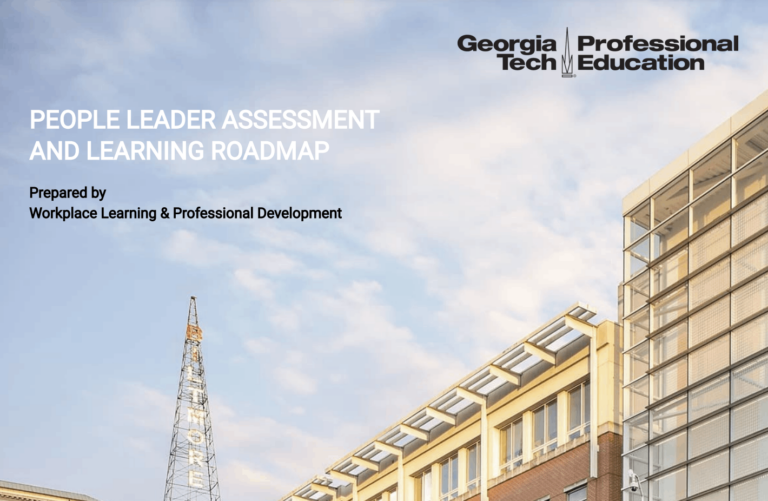How leading higher education institutions are using personalized reports to up their game.
Long gone is the era of universities and colleges as the traditional institutions they once were. Many top schools have been harnessing the power of automation to create digital learning assessments and personalized reports with qualitative feedback.
Automated reports are generated using software that quickly analyzes individual assessments. White labeling features automatically turn them into customized PDF reports in line with their own branding guidelines.
Best practices from the US, UK and Europe
Learn how top institutions from around the world have introduced more effective ways of working, while simultaneously providing valuable insights for faculty, staff and students alike.
We’ll walk you through 5 best practices from a variety of departments at the following academic institutions and organizations:
- Seattle University, Georgia Tech and UT Austin (USA)
- Vlerick Business School (Belgium)
- Tailored Tutors (UK)

1. Digital learning and engagement tool for students
We all know most students these days don’t bring pen and paper to lecture halls. They’re glued to their laptop or their cell phones. And not just during their online remote classes. How can faculty engage their students and meet them in the digital world they live in?
Seattle University’s Business School
Professors who teach in Seattle University’s Albers School of Business and Economics pooled their knowledge to create a research-backed EQ Primer self-assessment to measure emotional intelligence.
While intellectual intelligence (IQ) and business or technical expertise play important parts in determining someone’s success in the business world, we now know that emotional intelligence (EQ) is also an important factor in this equation. In fact, the higher placed a person is in an organization, the more important emotional intelligence becomes – both to their current success as well as to their continued advancement.
One of the key advantages of an MBA education, in addition to the solid foundation in business that they receive, is that students learn to work effectively in teams and develop their leadership skills. Understanding emotional intelligence is a very important part of this equation.
The EQ assessment can provide feedback in 4 key categories and 20 subcategories:
- Self-awareness
- Self-management
- Social awareness
- Relationship management

As part of courses focusing on emotional intelligence, decision-making, teamwork and leadership, instructors in Seattle University’s MBA programs use the EQ assessment as a digital learning tool for students. This type of self-assessment helps to uncover blind spots in the realm of emotional intelligence and provides concrete feedback, motivating students to learn where they can improve as individuals to achieve academic and professional success.
Sounds interesting? Learn more about self-assessment capabilities here.
2. Performance tracking tools for students, faculty and tutors
Professors are also using assessments to find out how students are progressing in their courses, months before the midterm exams. So, with ample time to revisit certain topics or make adjustments, if needed.
These performance assessments identify areas where students may be struggling, and the automated personalized reports offer targeted recommended digital learning sources and support to help them succeed.
That can be especially helpful for students who may be struggling to keep up with their coursework. These assessments identify the root cause of their difficulties, and the corresponding personalized reports provide customized support and learning tools.
Similarly, tutors for pupils at secondary schools are also taking advantage of these assessment tools for true academic use.
Tailored Tutors
Let’s take a look at the UK-based tutoring organization, which supports high school students studying for their ‘A Level’ exams, which test their understanding of the subjects they followed. All to improve their chances to get admitted into universities such as Oxford, Cambridge, the University of Bristol, Imperial College London etc.
Tailored Tutors offers more than 1,000+ digital learning assessments and fun quizzes that allow students to practice the subject matter in a playful way by showing correct answers on academic subjects like biology, chemistry and mathematics.

At the same time, the assessments also help the tutors get to know their students better so they can work more effectively together to set them up for success.
3. Interactive course finder for the digital generation
Browsing hundreds of college course offerings and deciding which courses to enroll in can be daunting for prospective students, whether they’re high school seniors or experienced professionals exploring graduate programs. Course-finding tools are now available to help the digital generation determine which classes are right for them. Handy for admissions staff and career counselors too!
The University of Texas at Austin
UT Austin’s interactive course-finding competency mapping tool helps prospective Executive Education students find out which classes are best suited to help them achieve their professional and academic goals.
In a matter of minutes, they select priority competency areas and skill sets they want to improve, such as:
- Communication
- Strategic thinking and negotiation
- Finance
- Creative product and service development
- Data analytics and predictive models for informed decision-making
- Leadership techniques
- Marketing

It’s logic-based, so, depending on the answers, the tool asks more or fewer questions about those areas to determine the best course recommendations.
Once prospective students submit the assessment, they immediately receive a customized report with personalized course recommendations based on their assessment. A fully automated lead generation tool! And it works so well because students receive valuable qualitative feedback tailored to their specific needs and interests.
4. Maturity scans and benchmarking for corporate and executive students

Respondents automatically receive a personalized report after completing the assessment. The report features charts that compare a company’s score across 8 organizational dimensions of digital maturity to the benchmark of other companies who have taken the assessment. A benchmarking report is available upon request.
Learn more about the power of maturity assessments and how to wield it with Pointerpro, here.
5. Learning and onboarding HR tools for staff and faculty
In the current war for talent, investing in workplace learning and professional development for existing staff has become more important than ever.
Universities are using automated assessments and personalized reports as a digital learning and HR tool for staff and faculty at universities. They help identify areas in which their employees are excelling, or may need additional support.
Team or 360 assessments, where colleagues rate themselves and give feedback to each other, are also great tools to strengthen teams, improve job satisfaction and develop high-performing employees.
Or on a practical note, assessments and reports can also be used as an easy onboarding tool for new staff members.

For instance, on their first day, new researchers receive practical details on how to get the right building and parking facility or which research protocols to follow.
Or think of the possibilities for peak periods such as student orientation, when thousands of students have to navigate campus for the first time. Personalized reports could put together a program for them, direct them to the right lecture halls or campus dining restaurants based on their dietary requirements. The possibilities are endless!
Georgia Institute of Technology
Georgia Tech developed a people leader assessment and personalized learning roadmap report to support their people leaders. They discover their key strengths and areas of growth, in connection to the university’s values, behaviors, practices and policies.


Instantly, they receive a personalized report with digital learning opportunities listing a variety of resources such as articles, videos and podcasts.
In conclusion:
These 5 best practices illustrate the benefits of how digital learning assessments and automated reports are helping higher education institutions to operate more efficiently. Simultaneously, they are providing valuable insights and data to further improve the learning experience, so both students and staff can thrive.
The start of this decade has taught us how digitalizing can ensure the continuity of educational institutions’ activities. Pointerpro is more than happy to provide them with numerous ways to do so.
Feel free to find out more about learning quizzes, personality assessments, test making and many other cases for which Pointerpro has proven to be a perfect fit.


